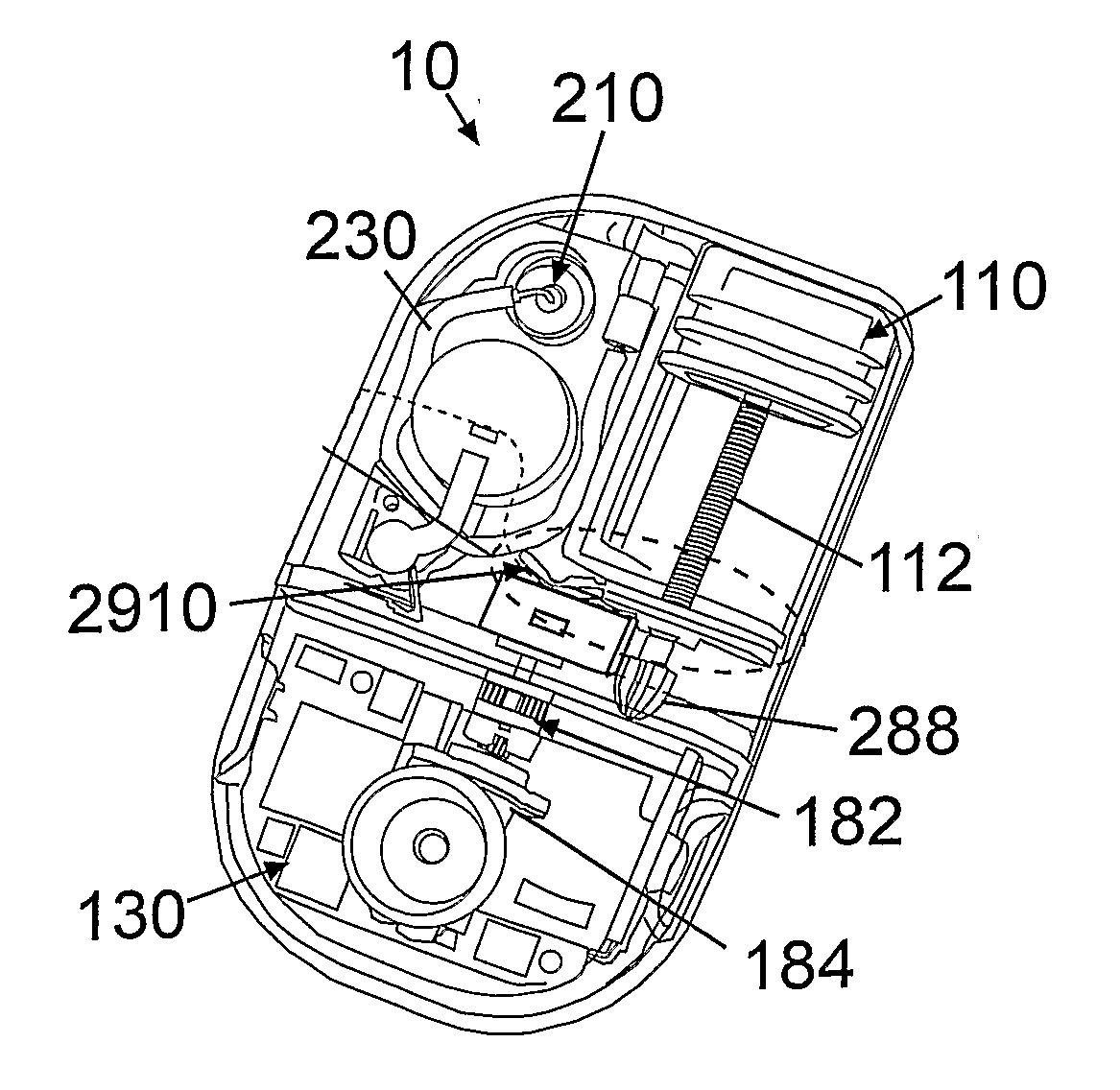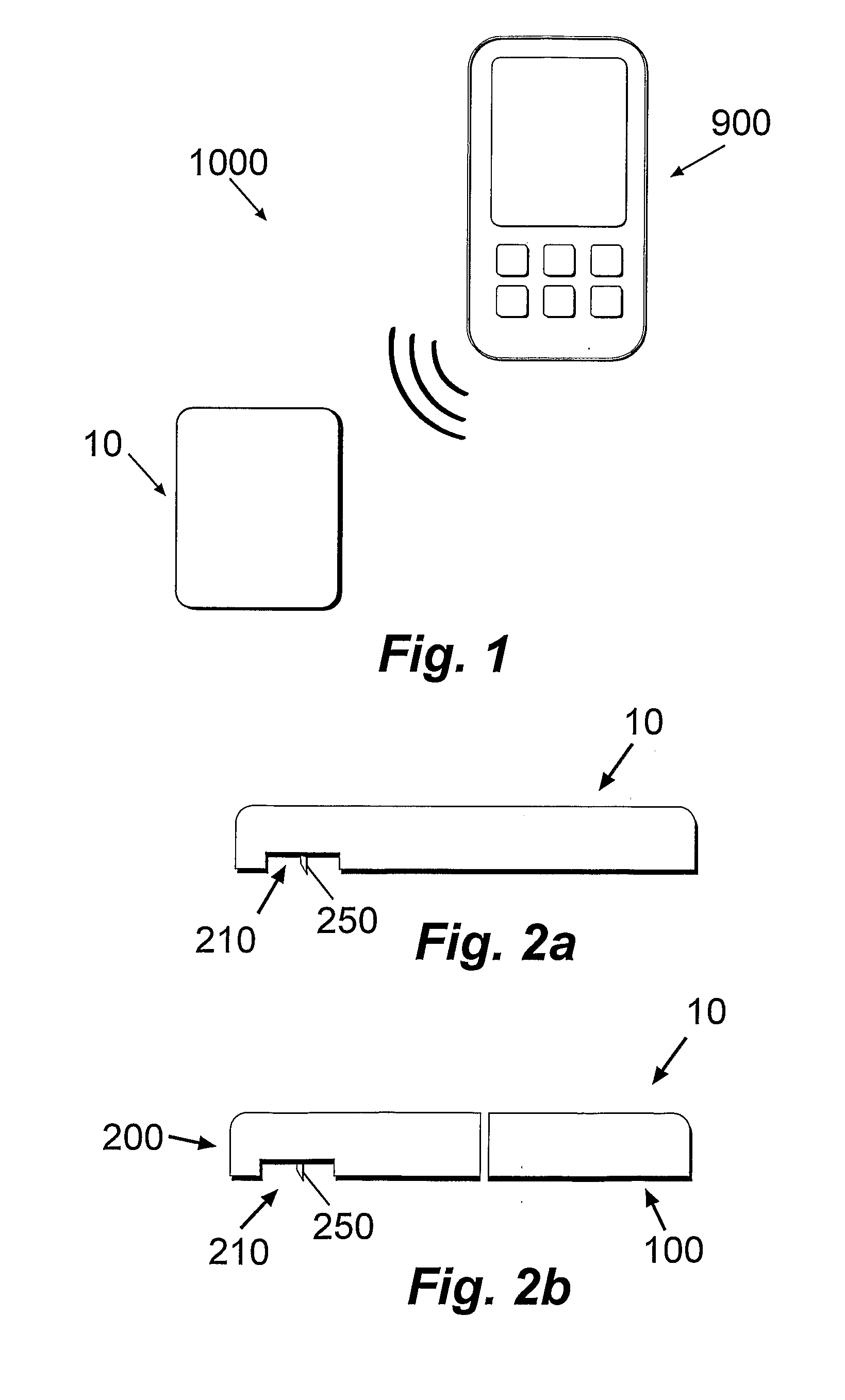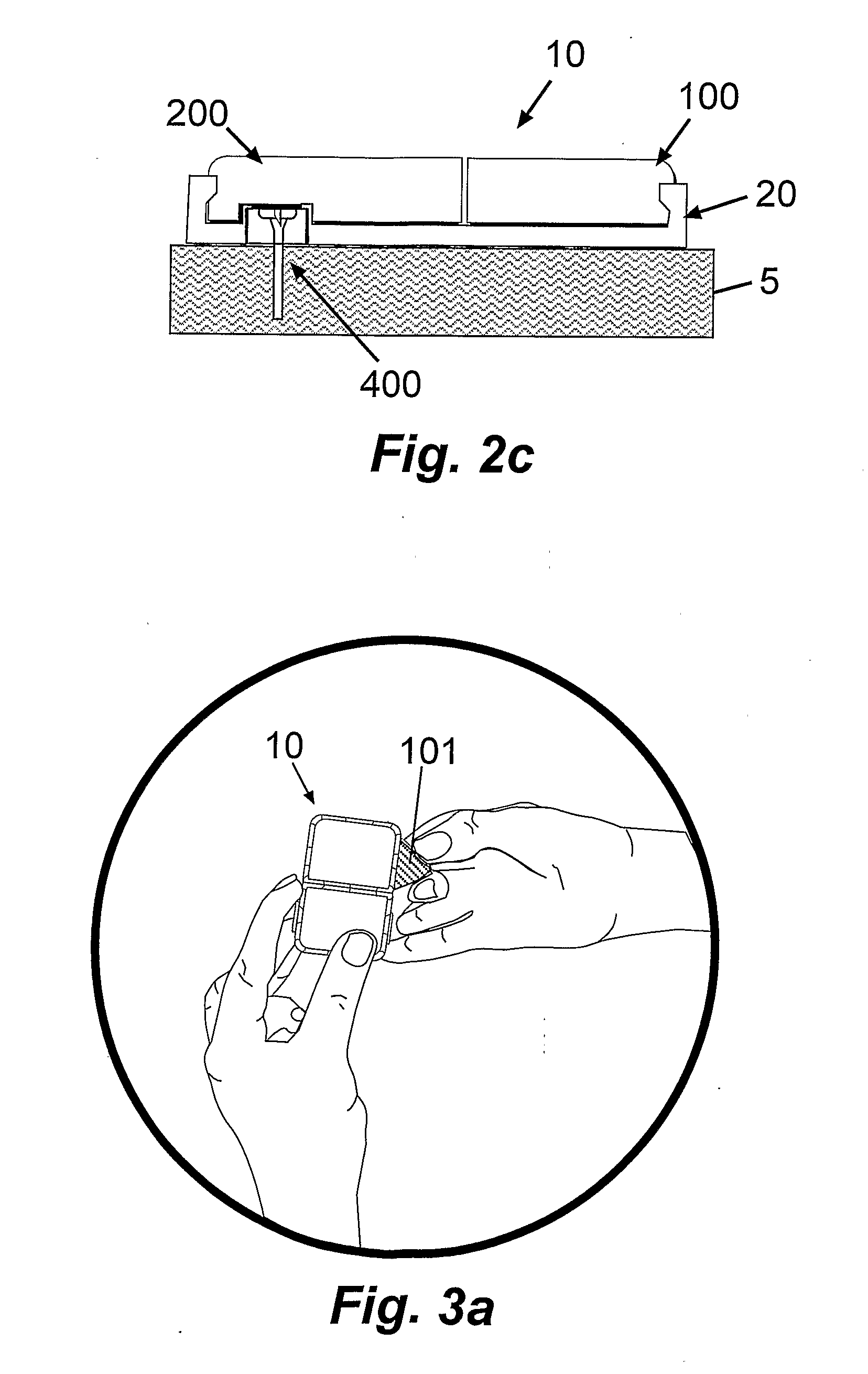Both basal and bolus volumes generally have to be delivered in relatively precise doses, according to an individual prescription, since an overdose or under-
dose of insulin could be fatal.
Although these devices represent an improvement over multiple daily injections, they nevertheless all suffer from several drawbacks.
One drawback is the
large size and weight of the devices, caused by the configuration and the relatively
large size of the driving mechanism and
syringe.
These relatively bulky devices have to be regularly carried in a patient's pocket or attached to his / her belt.
These uncomfortable, bulky devices and long infusion sets are disfavored by the majority of diabetic insulin users, since they disturb regular activities, such as sleeping and swimming.
Furthermore, the effect of the image projected on the teenagers' body is unacceptable.
Second generation
skin adherable infusion devices suffer from major drawbacks which include, inter alia, the following:They are heavy and bulky because:The
syringe-type reservoir is cylindrical in shape and therefore, if the devices require retaining, for example, 3 ml of
deliverable drug, their dimensions are such that they are either long with a small
diameter (e.g., 60 mm long, 8 mm inner
diameter) or short with large
diameter (e.g., 17 mm long, 15 mm inner diameter).
These devices' dimensions can result in considerable discomfort to the patient while the device is adhered to his / her
skin.The
cannula insertion mechanism is contained within the housing of the device.
Thus, the user has to carry this mechanism (generally a bulky spring loaded mechanism) during the 2-3 operating period of the devices.The energy supplied generally requires more than one battery, e.g., four batteries.The costs of using second generation devices is generally high because the entire device, including the relatively expensive components (
electronics, driving mechanism, etc.), has to be disposed of every 3 days or so.Reservoir filling requires an additional
syringe to draw the fluid from a container (e.g., a glass
bottle) to fill the pump reservoir.
This procedure is cumbersome and the risk of accidental piercing by the
syringe needle is high.Second generation devices generally cannot be disconnected from the patient's body, although there are situations in which patients would prefer to temporarily disconnect the pump (e.g., while taking showers, while participating in sports activities, etc.).The cannula is rigidly secured to the pump housing, and consequently users typically cannot choose cannula length and / or vary the
insertion angle.
Insulin wastage—In the event of site-misplacement of the cannula (because of scarred tissue, bleeding, cannula kinking, etc.) the entire device, including the filled insulin reservoir, has to be disposed of.Device controlling—available wirelessly-controlled pumps do not provide the user with the ability to control the delivery of insulin without the
remote control.
This can be dangerous in the event the user loses his / her
remote control, and may also result in the creation of psychological barriers for the user to trust the pump's operation.
Currently available
third generation devices nevertheless have a few drawbacks, including:Waste of insulin—the disposable reservoir has to be filled to its full capacity, and thus, in situations where the user used less than the full capacity of insulin, some insulin will be discarded (e.g., during three days of operation a user consumes 1 ml, corresponding to 100
Insulin Units, from the available 2 ml in the reservoir, corresponding to 200 IU of insulin, resulting in a waste of 1 ml of insulin)
Reservoir volume cannot be precisely monitored and a “
low volume” alert is generally not available.Filling process requires an accessory syringe to draw insulin from another container (e.g., a
vial) to fill the reservoir.Complexity of components.Relatively high cost of manufacturing currently available third-generation devices.
 Login to View More
Login to View More  Login to View More
Login to View More 


